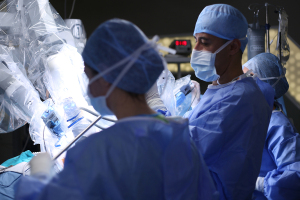From the April 2019 issue of HealthCare Business News magazine
By Vinod K. Goel
In 1806, Philipp Bozzini unveiled to the world his Lichtleiter, a contraption that used mirrors to shine candlelight into a tube inserted in the body and to reflect an image back out. We now consider the Lichtleiter to be the first endoscope. And in 1895, Wilhelm Roentgen discovered that he could create energy rays capable of shining through a human body and creating on film an image of the inside of the body – rays he dubbed “X-rays.” Their work laid the foundation for minimally-invasive surgery.
Today, minimally-invasive surgery (MIS) is of course commonplace. Using high-tech digital imaging and precision tools, a wide variety of surgeries are performed through small incisions, promising reduced pain (and accompanying need for painkillers), quicker recovery, improved access to care, better results, and reduced costs.
In some cases this has manifested as true; however, in many cases MIS still falls short of achieving these benefits. With today’s rapid pace of innovation, we as a society stand positioned to bridge this gap and truly revolutionize healthcare through MIS.
What is holding MIS back? In short, the skill set required for effective MIS places a significant cognitive burden on interventionalists. This is true on the “input” side – the imaging which is used to navigate and make decisions, as well as the “output” side – the tools and instruments which are used to perform the surgery.
Whereas traditionally, a surgeon can easily examine the structures being treated – using both sight and touch – in MIS the images can be quite limiting. A scope provides an image from an unnatural and limited viewpoint, with a limited field of view. And imaging modalities based on X-ray, ultrasound, or similar technology generate noisy two-dimensional grayscale projections, to make any sense of which requires significant training and concentration.
Similarly, in conventional open surgery the anatomy is much more readily manipulated and repaired. With minimally-invasive techniques, on the other hand, there is a limited range of movement permitted, as tools with specific limited functionality are deployed from a distance. This presents a significant challenge with respect to both precision and control.
Additionally, certain types of MIS create new risks which are absent in open surgery. X-ray fluoroscopy, used to guide many interventional procedures, subjects patients as well as caregivers to ionizing radiation. And contrast agents can prove damaging to the kidneys. There is an element of chasing one’s tail in using MIS to avoid damaging healthy tissue while simultaneously irradiating a roomful of people and risking kidney failure.
